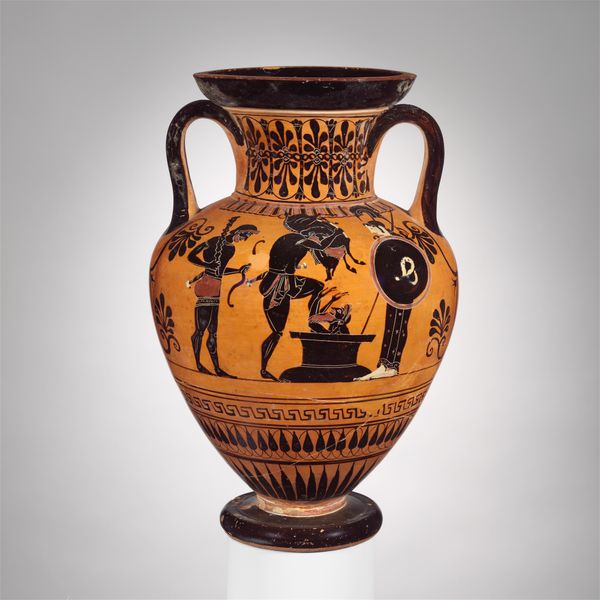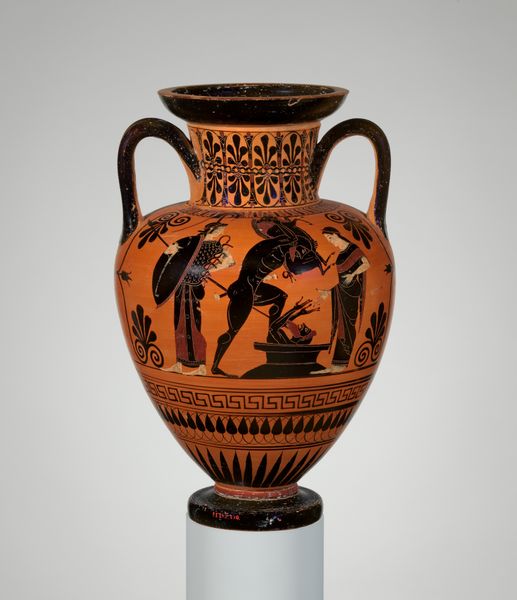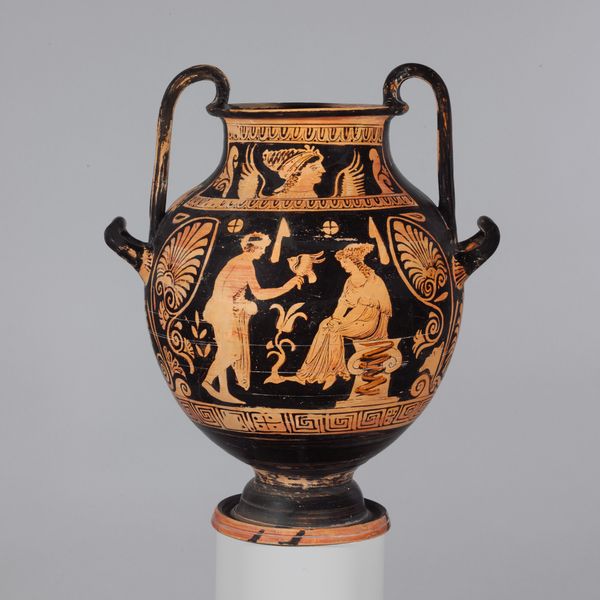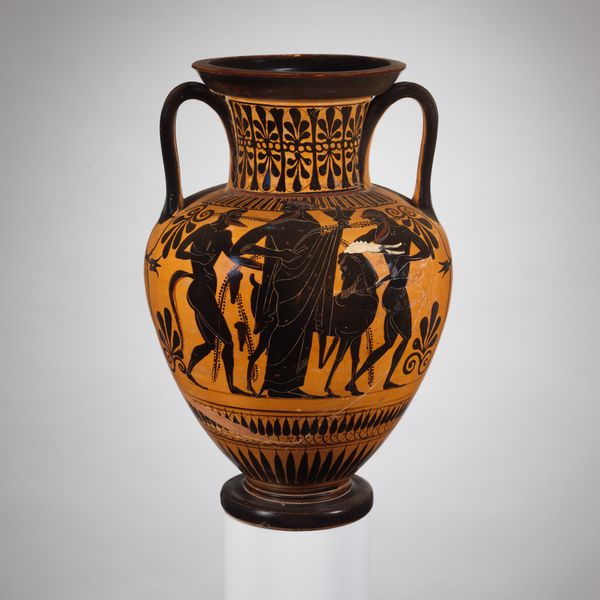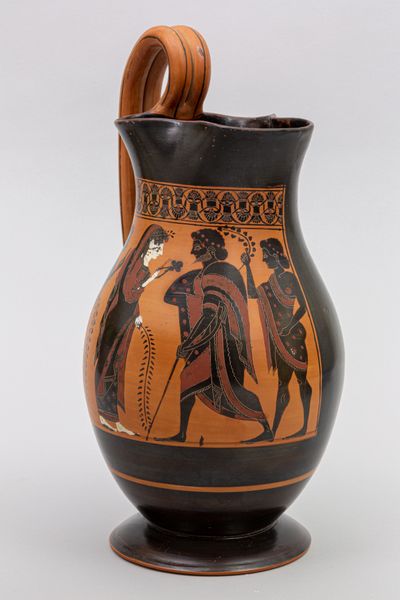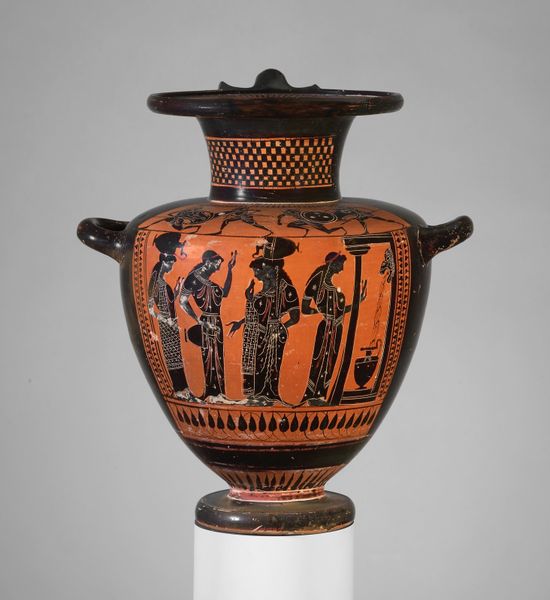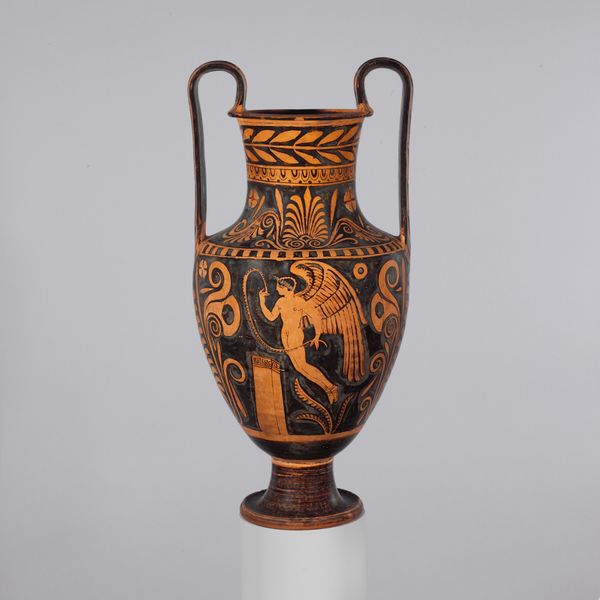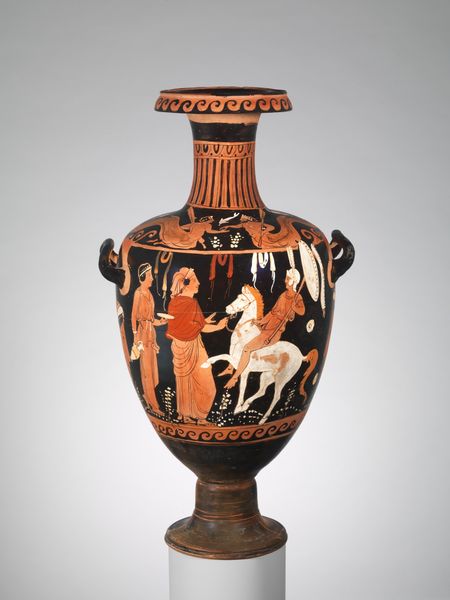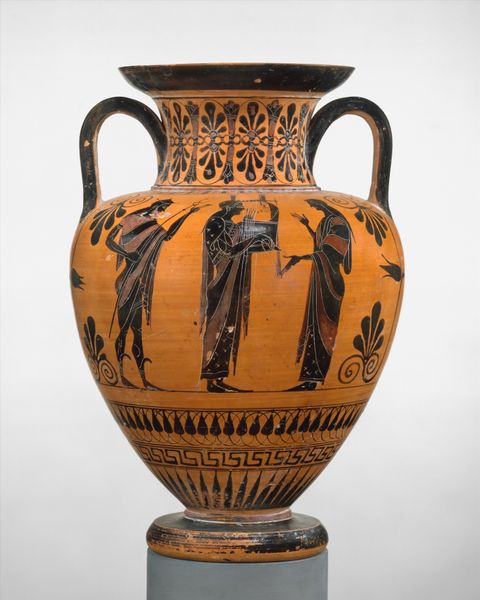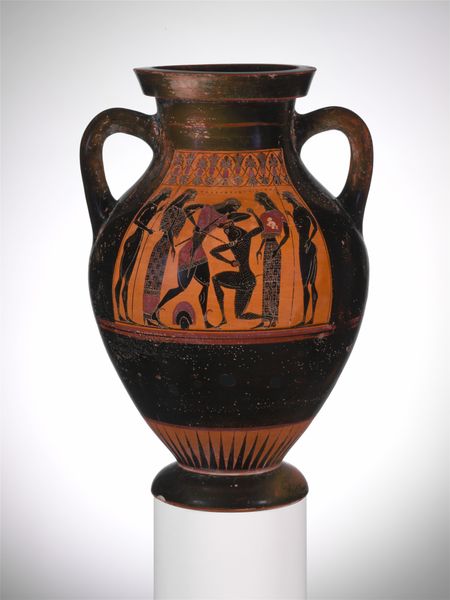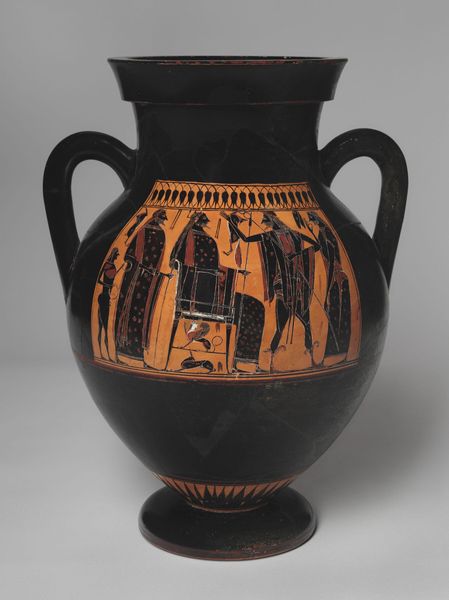
drawing, painting, ceramic, earthenware
#
portrait
#
drawing
#
pottery
#
painting
#
greek-and-roman-art
#
ceramic
#
vase
#
figuration
#
earthenware
#
ancient-mediterranean
#
ceramic
#
earthenware
Dimensions: H.: 11 5/16 in. (28.7 cm)
Copyright: Public Domain
This terracotta neck-amphora was created in Attica, Greece, around 500 B.C.E, and is attributed to the Class of New York 96.9.9. The scene depicted is a Dionysian Thiasos, or revel, referencing the god Dionysus and his ecstatic followers. The vase serves as a window into the social and religious practices of the time. The imagery conveys the Dionysian cult's emphasis on altered states, music, dance, and the blurring of social boundaries. Was this used as a mixing vessel during a symposium? If so, the image provides a glimpse into the rituals and ideologies that permeated ancient Greek society. Looking at the vase now, we can see the careful construction of meaning and the power of imagery in shaping cultural values. Through archaeological finds and historical texts, we can try to understand what it meant to the people who made and used it.
Comments
No comments
Be the first to comment and join the conversation on the ultimate creative platform.
